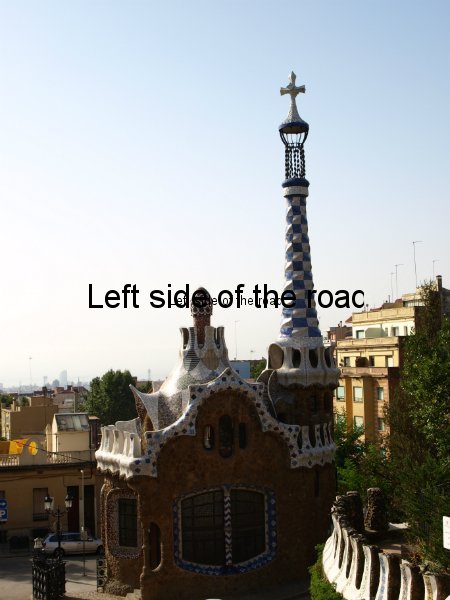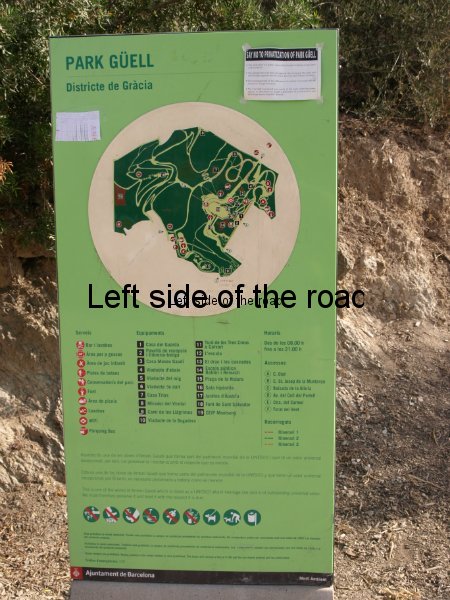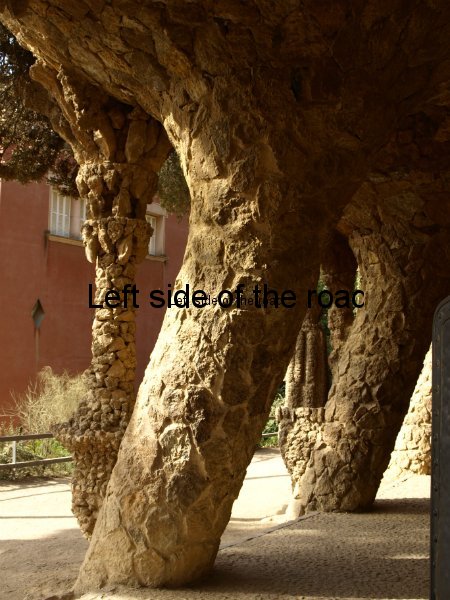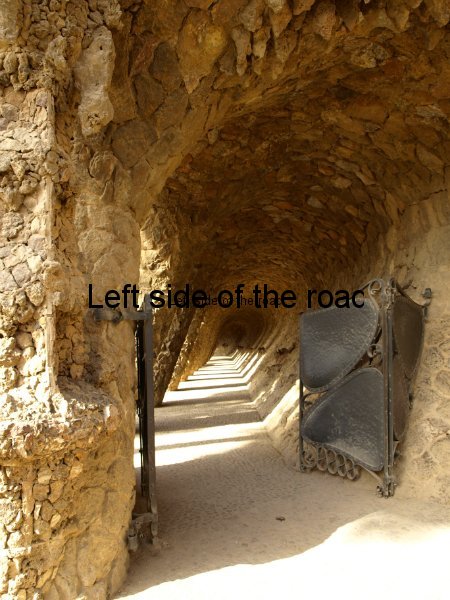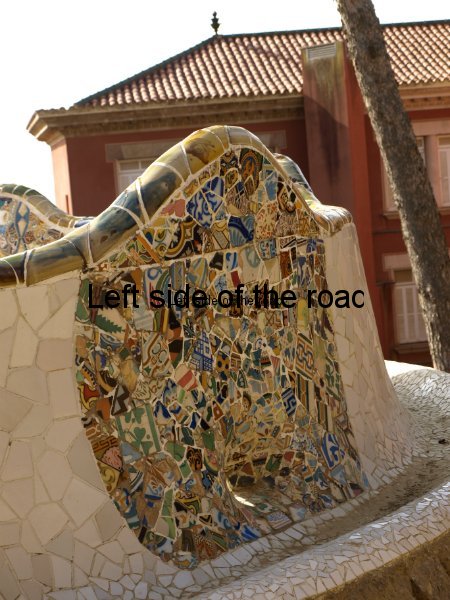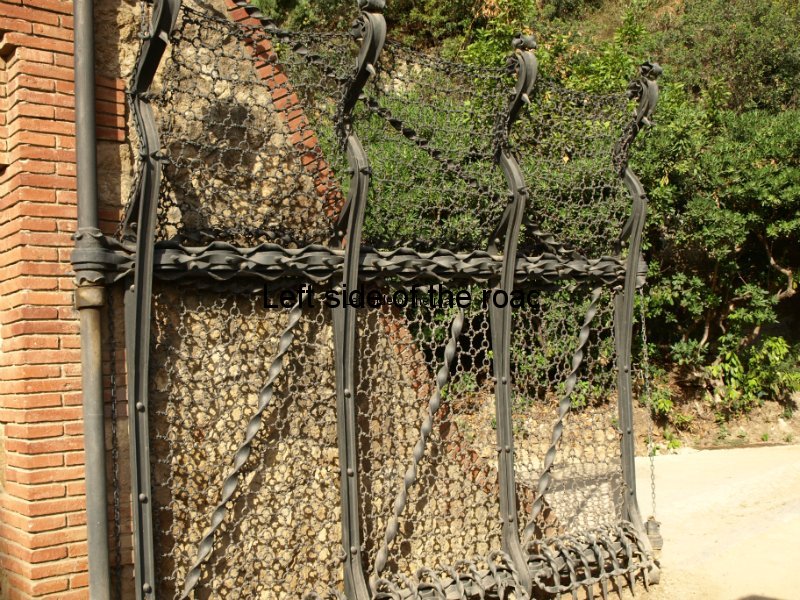More on covid pandemic 2020-2?
Ukraine – what you’re not told
[The article below was published on the Jacobin website on 5th December 2021. It is reproduced here exactly as it appeared originally (apart from the links). Although it refers to the situation of workers in the United States health service I believe there are enough parallels with the situation in Britain (where the National Health Service has been subjected to a creeping privatisation for decades) to warrant its publication on this blog. The insidiousness and machinations of capitalism know no borders. Something which most workers don’t accept and refuse to act in a united manner – within their own country and internationally.
In Britain all the ‘tinkering around’ made by successive governments (really since just after it was established) of the NHS has always been with the excuse that this would make the service better but the reality has been the opposite. The ruling establishment found the idea of something that benefited the majority of the population an anathema and they were able to get away with the gradual dismantling of the structure of the NHS by moving more and more of the money making aspects towards private hospitals and clinics. People in the UK would still get treatment for ‘free’ – but the costs society had to pay now have to take into account the profits for the shareholders.
When it came to medical staff this meant that private companies were getting their skilled workers for free. They have never contributed anything for the training of these (British) nurses and doctors – all the cost for which was (and is) carried by the State. And if there was a shortage then they would scour the world for those skilled practitioners – as, shamefully, did/does the NHS. That meant that the poorer countries of the world spent huge amounts in educating such medical staff but would never get the benefits of that investment.
Lack of investment in the education and training of these medical staff in Britain, the poor conditions under which they are expected to work, coupled with the lack of availability of such skilled workers from other parts of Europe (due to the UK leaving the European Union) and the rest of the world (due to the pandemic) means that staffing levels in British hospitals are way below what is required to run an efficient service which serves the population without abusing the staff.
As with many of the negative aspects of British society (for example, the level of poverty and inequality) these shortages in hospitals were not caused by the pandemic but were merely exacerbated and exposed by the arrival of the covid virus.
And the ‘success’ of the virus has been, in part, due to the fact that the health systems in the vast majority of the countries of the world had been struggling to deal with everyday issues and was woefully inadequate when it came to deal with the extra pressures caused by the pandemic. This shortage of staff, facilities and equipment, together with a population with a high number of ‘vulnerable’ people were the reasons the deaths have been so high.
The call in Britain since early in 2020, from the Buffoon and his government, has been to ‘Save the NHS’ – a NHS they had been instrumental in weakening since its foundation. That ‘saving of the NHS’ has meant the closure of society on a number of occasions (and another is almost certainly due in the UK in the next few days) with a huge cost to society and especially for the poorest and most vulnerable. By ‘saving’ by inadequate investment in the health service in the past the government has spent an unimaginable amount of money to prevent society from rising up and throwing the incompetents out of the country.
Although that money came from nowhere the population will still be expected to clear the ‘debt’. How that will pan out will have to be seen. It will be interesting if those people who stood on their own doorsteps on various occasions since March 2020, banging their pots and pans in support of the NHS and the other ‘essential workers’ (who are the non-essential workers?) will remember this and make sure that public services get the funding they require, not just to deal with ‘normal’ times but for the next pandemic. It’s becoming increasing certain that (as with disastrous weather conditions due to the climate emergency) such a likelihood is not a matter of if but when.]
Hospitals are using the nursing shortage to stiff health care workers
by Heather Rust
Rather than materially address the underlying issues of the nursing shortage crisis, health care providers are exploiting it in order to further consolidate power at the top of industry hierarchies – and break the power of organized labor below.
There’s no shortage of articles about our nationwide nursing shortage. Everywhere, foreboding headlines paint a dire picture of a health care system stressed by a skyrocketing number of patients and a dwindling number of nurses able to care for them.
But there are no attendant articles about hospital corporations, public health systems, and politicians rising to meet this shortage. One would expect hospitals to be aggressively recruiting and retaining as many nurses as possible with competitive pay, safe working conditions, and attractive benefits. But industry-wide labor disputes throughout the pandemic indicate that the opposite is true.
Industry bosses’ refusal to address this labor shortage by granting nurses even the most basic rights and protections — despite our nation’s major health systems making billions in surplus over the course of the pandemic — suggests that this crisis in nursing isn’t a crisis for everybody.
In fact, for decades hospital corporations, obsessed with profit over all else, have been cutting staffing levels while putting increased stress and unrealistic demands on the workers who remain.
The result is an impossible situation in which workers are pushed to do more with less, leading to nurses and other health care workers leaving the field due to stress and an inability to provide adequate care for their patients.
When staffing is cut to the bone by health care companies looking to line their pockets, patient care suffers, often with devastating consequences. Researchers have shown that, after controlling for patient and hospital characteristics, each additional patient assigned to a nurse increases the odds that one of those patients will die by 7 percent.
Fewer nurses means worse outcomes for patients — but it also means lower labor costs, less union power, and more profit for hospital corporations. Their response to the current nursing shortage demonstrates that this is a trade-off they’re more than willing to make.
The Generational Shift
There are some objective conditions fueling this staffing crisis. The average age of registered nurses in this country is around fifty years old, and the nursing profession won’t be spared in the mass exodus of baby boomers from the workforce. A 2017 study speculated that around 1 million of the 3.8 million registered nurses in the United States will leave the workforce by 2030.
This timeline has since been accelerated by COVID-19. A survey of nurses in Washington found that around a quarter of nurses in the state either retired or are thinking about retiring earlier than planned because of the stress brought about by COVID.
And this trend isn’t limited to the boomer generation. According to studies released earlier this year, between 20 and 30 percent of health care workers in general — and two in five nurses in particular (43 percent) — are thinking of leaving the profession entirely.
But a generation of aging and retiring workers doesn’t just mean fewer nurses — it also means more patients. As boomers exit the workforce, they’ll be entering our nation’s health care programs and facilities en masse.
Even without the need to account for massive historical contingencies like a pandemic, the 276,000 or so registered nurses projected to be added to the ranks of the labor force over the next decade cannot keep pace with the astronomical growth in the number of people needing care.
It makes sense given this context that the demand for nurses and other health care workers would be intense. And compared to other sectors, health care is actually growing as an industry. Today care workers account for one in seven jobs nationwide. The Bureau of Labor Statistics predicts the employment of registered nurses will grow 9 percent from 2020 to 2030, and employment of health care workers in general will grow by 16 percent over the same period, which is much faster than average for all other occupations.
As these numbers indicate, nurses clearly provide an essential social value. Whether they are appropriately valued in return is another question. Nurses today face increasing workloads, more stressful cases, worse nurse-to-patient ratios, chronic understaffing, higher risks of workplace violence, stagnating wages, and fewer resources.
Despite these conditions, hundreds of thousands of people every year still decide to pursue nursing as a career. But the damage wrought on our public institutions by privatization and the profit motive affects education as much as it does health care. In 2019, nursing schools turned away 80,407 qualified applicants from nursing programs due to an insufficient number of faculty, clinical sites, classroom space, and clinical preceptors, as well as budget constraints.
The nursing shortage, then, doesn’t seem to stem from a mysterious loss of interest in nursing as a practice, but from this gap between the increasing social demand for care and the physical stress and economic marginalization of the people and public institutions that perform it.
Management by Stress
In the United States, health care is treated not as a publicly provisioned good but as a commodity. Its function isn’t to make the general population well but to make a small sliver of this population wealthy.
Given the profit motive in US health care, it’s no surprise that health care corporations are making decisions based on their bottom lines, not on what is best for patients. In a field where physical bodies matter more than anything else, staffing constitutes a major portion of hospital operating expenses, making up roughly 50 percent of total operating costs. Given the tremendous cost of labor to hospital operations, executives are always looking for ways to decrease staffing and the costs associated with employing workers.
Many hospitals have found a solution in so-called lean production. This management strategy, originally developed in Toyota auto factories, is premised on cutting staffing to the bare minimum and forcing the remaining workforce to work harder — in the case of nursing, overburdening workers and subjecting patients to terrifyingly unsafe conditions. Because of the importance of increasing the exploitation of individual workers in this model, critics like Mike Parker have called it “management by stress.”
The results of management by stress in health care have been predictable. Overwhelmed by impossible expectations, suffering patients whom they cannot do enough to help, and a lack of breaks and vacations, nurses and other health care workers are leaving the bedside in droves.
Meanwhile, US health care corporations made $180.7 billion in profit in 2019, and are projected to make $197.8 billion in profit by 2024. These companies unsurprisingly made a windfall in the first year of the COVID-19 pandemic.
But despite these profit windfalls, all health care positions except physicians have seen slow or negative median wage growth over the past decade. And while the care economy as an industry is growing, real wages lag far behind this sectoral growth as horizontal mergers and consolidations among corporations are creating a situation in which a smaller handful of buyers of a product (in this case, nurses’ labor) can dilute competition and exert more control over wages and productivity. The Biden administration’s massive bailout of big hospital chains has only accelerated this massive sectoral consolidation.
The tight workplace control resulting from corporate consolidation, lean production, and its attendant union-busting practices means that nurses aren’t just seeing stagnating wages — they’re also seeing rapidly deteriorating working conditions. An aging population and higher acuity patients, coupled with decades of funding cuts across the board, has only made these poor conditions worse.
The pre-COVID nursing situation was already unstable. For many, the pandemic made it completely untenable.
Let’s start with the grimmest reality related to the nursing shortage: over 1,200 nurses have died from COVID-19. While the proximate cause of these deaths was obviously the disease itself, the ultimate cause was the decision by those in power not to allocate society’s vast resources toward the basic maintenance of human life.
Many of these deaths were avoidable. Very few of them occurred in well-funded academic medical centers, while the vast majority took place in shamefully underfunded facilities like nursing homes, hospices, and prisons.
Another irony at the heart of the nursing shortage is that by April 2020, barely a month into the pandemic, 1.4 million US health care workers had already lost their jobs. The nurses that didn’t die or get laid off faced a dramatic increase in the number and severity of sick patients, rapid changes in protocols, severe understaffing, and shortages of personal protective equipment — plus the emotional toll of being frontline workers during a pandemic, often serving as substitute caregivers for dying patients whose families were unable to visit hospitals because of COVID-related security measures.
While nurses were deemed “essential” for their pandemic-related labor, these nominal accolades didn’t translate into any real material investment in helping them do their jobs.
Shortage or Strategy?
So what are health care corporations doing in response to the nursing shortage? In essence, they’re using it as a pretext to accelerate changes in the way that nursing labor is performed and compensated.
Where providers are hiring new nurses, they’re skimping on training with predictable results. Without the resources to support them, these hiring sprees are putting increased pressure on the more experienced staff. “We’re actually hiring excessively,” Kelley Cabrera, who works as an emergency department nurse in the Bronx, told Jacobin.
“Except wages are not attractive, so we’re only attracting new grad RNs. Staff is all quitting because of the pay and conditions, so there’s nobody to train all the new hires.” Cabrera added that agency staff, who are not permanent workers but instead hired on an as-needed basis, “are training new nurses. And the few non-agency staff left, like myself, are refusing to train anyone else because conditions are so bad and it’s unsafe. And it’s also not worth the $12 an hour to do it.”
On the other side of this dynamic, new grad hires are thrown onto the floor before being properly trained, leading to unsafe conditions, burnout, and early departures from bedside nursing. A new grad labor and delivery nurse who requested anonymity told Jacobin, “When we were hired, we were promised a certain amount of training and support, but that was immediately walked back.
Management said, ‘We just don’t have the staff for that.’ Of the eight new grads I started with, three left bedside nursing entirely within six months because they felt too unsafe.”
This massive imbalance between experienced and inexperienced nurses creates a vicious cycle: experienced nurses don’t have the time to train new nurses and take care of their patients, which has a bottlenecking effect on the patient population of a given facility, which then creates even more work for the experienced nurses, which then makes more experienced nurses leave, which further exacerbates this imbalance. “At a certain point, there’s only so much we can do, and ramming a unit with new grads who are being rushed off orientation doesn’t help anyone,” said Cabrera.
Rather than providing sufficient support to these experienced nurses to encourage them to stay, health care corporations instead divert funding toward big sign-on bonuses and agency staff. Agency staff, also known as travel nurses, are independent contractors who are hired through staffing agencies that act as middlemen between workers and health care facilities. They are nonunion workers without benefits who are compensated at many times the hourly rate of staff nurses who hold permanent jobs at the same facilities, some of which are union, others not.
In many cases, hospitals utilize agency staff to maintain lean staffing, which means employing as few staff as possible — and bringing in outside workers to fill in gaps only when it’s considered absolutely necessary. The result is that permanent workers are required to do the same job with fewer staff, inevitably leading to worse patient care and increased stress for those workers left to do an impossible job.
While hospitals pay agency nurses significantly higher hourly wages than those nurses they employ on a permanent basis, it’s often more profitable to cycle travel nurses and leave full-time positions unfilled due to the high cost of benefits and the desirability of being able to change staffing levels at will.
As facilities implement leaner and leaner models of staffing, many nurses have noted with suspicion that the so-called nursing “shortage” is occurring alongside a massive rise in nonpermanent agency hires. Nurses across the country have also recently observed health care facilities posting job openings they have no intention of filling. This way, the facilities can blame the shortage on workers’ refusal to work while diverting the money that would have gone toward filling these positions toward agency staff.
“Management is using the ‘shortage’ to justify contracting out (these jobs to agency staff) and increasing the registry budget but not wages and benefits,” said one nurse in California who requested anonymity.
While agency staff get paid at much higher hourly rates than traditional nurses, facilities see them as a long-term investment. “Working at a union facility,” asked Consuelo Vargas, a bedside nurse in Illinois who recently stepped back from the profession due to low morale, “how do we have a union if at least half of the nurses are nonunion agency RNs? Working at a public hospital where employees pay in to a pension fund, what happens to the pension fund when nurses are leaving and the hospital is outsourcing environmental, transporters, CNAs, and RNs, and none of these individuals pay into the fund? What happens to union hospitals?”
A nurse in New Jersey echoed this sentiment, saying that his facility’s justification of the shortage as a way to hire more agency staff is “an intentional move to weaken labor. Talk in the break room has been a mixture of ‘We don’t get treated well’ to ‘I should become an agency or traveling worker too.’”
Marty Harrison, a nurse at Temple University Hospital in Philadelphia and member of the Pennsylvania Association of School Nurses and Practitioners, also said that her employer embraced the opportunity this shortage provides. “They would be perfectly happy if all of us problematic union members quit and they got to start over with 1,500 new RNs. They would love to staff, as necessary, with 100 percent agency.”
While the nursing shortage has nuanced origins — shifting population demographics; cuts in public health funding; decades of austerity budgets at the municipal, state, and federal levels; the increasing privatization and commodification of health care; and the unprecedented stress placed on workers and our health system by COVID — its trajectory seems clear. Rather than materially address the underlying issues of this crisis, providers will instead exploit it in order to further consolidate power at the top and break the power of organized labor from below.
The shortage is a serious crisis for nurses and patients alike, and employers are choosing to make it an inevitable one.
“Destroying the notion of a unit-based, full-time job with benefits would be a worthy investment at virtually any cost in their minds,” Harrison said. “Never waste a good crisis!”
So what’s the solution? In health care, just like most industries, the improvements in working conditions, pay, benefits, and patient care that have been won over the years are the direct result of courageous workers who said enough to the perverse profiteering of hospital corporations that value the dollar more than human life.
If American health care is going to be reformed to serve patients above all else, it will be through the commitment and organization of rank-and-file workers who are unwilling to tolerate the status quo any longer.
About the author
Heather Rust is a nursing student in New York and a member of Democratic Socialists of America.














